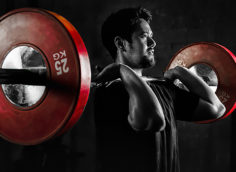The belt squat is a strength exercise that's been practiced by powerlifters for years now. It can be categorized as a supplemental lift or corrective exercise for people with squat technique issues. If you're lucky enough to have a belt squat machine in your gym, here's what the exercise looks like:
- A unique feature of the belt squat is how it tries to draw you into a severe anterior pelvic tilt position. The body then naturally counters this by generating more hip hinge action along with an increased muscular contraction from the glutes.
- In addition, the pulley drives downwards into the ground and helps decompress the spine a bit. So, in theory, there's some potential value in helping to resolve both flexion and extension-based lower back pain.
- The belt squat also takes your shoulder out of the squat movement, much like a safety bar squat or goblet squat. So if you have some shoulder issues and back squatting tends to irritate them, find a belt squat station.
- For athletes, this exercise reduces total-body workload and helps preserve an already drained CNS during an in-season training phase to help maintain performance and structural health.
- Last but not least, the nature of the belt squat station drives resistance onto the lifter in both a forward and downward direction, which causes the lifter to "reactively" shift his hips backward and engage the posterior chain more during the squat.
No Machine?
There are some specialty "hip squat" belts available that have many of the same benefits.
All you need is one of these and some weights. Google around for one if you're interested. You can also do something similar with a dip belt and dip station:
Not quite the same thing as the specialized machine, but it does have some of the same benefits.






